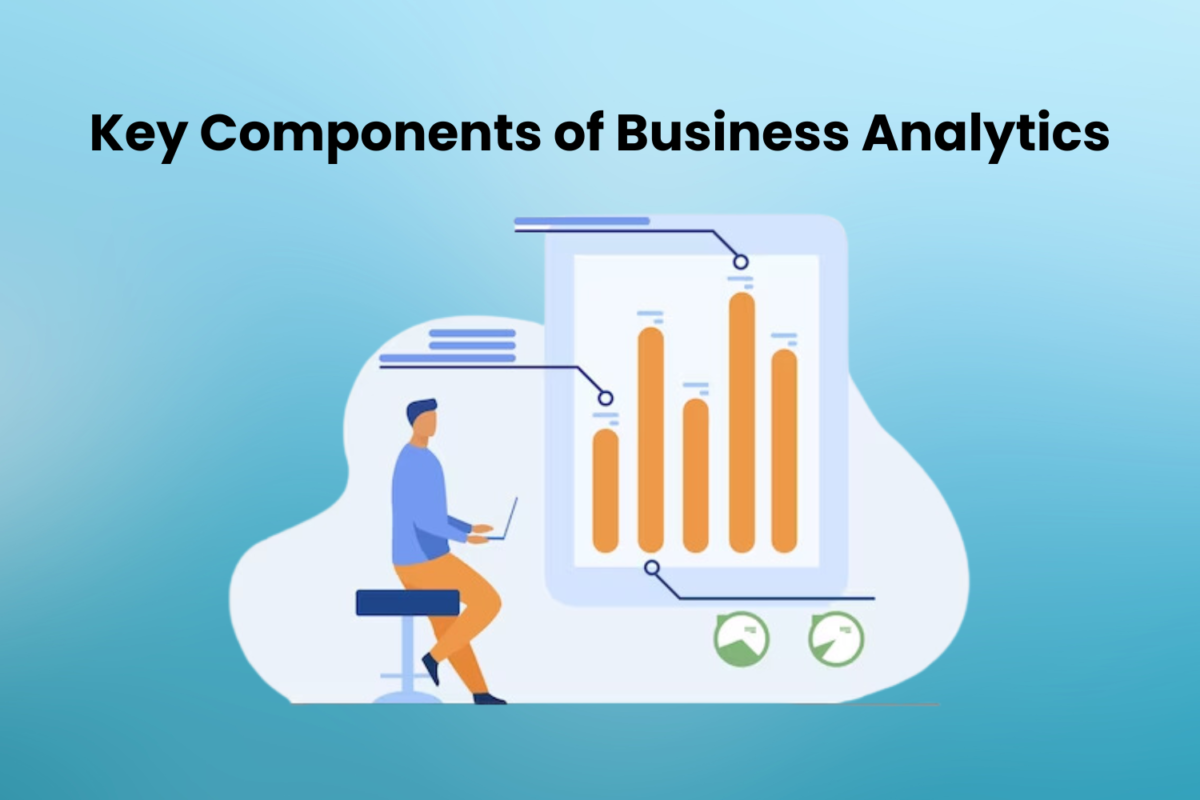
Today, most organisations wish to remain competitive in the market, to do so, using data to its maximum potential is essential. One technique that stands as a support system within the vast pool of data is business analytics. It helps organisations make wise decisions. So, the professionals who want to learn more about this field often join a Business Analysis Courses.
If you too want to become a Business Analyst, you can read this blog. While reading this blog, you will be learning about the key elements of this field and exploring the differences of Business Analytics vs Business Analysis.
Table of Contents
- Business Analytics vs Business Analysis
- Components of Business Analytics
- Data Collection
- Data Processing
- Data Analysis
- Data Visualisation
- Predictive Modelling
- Statistical Analysis
- Machine Learning
- Business Intelligence
- Conclusion
Business Analytics vs Business Analysis
Understanding the differences between two terms frequently used interchangeably is vital before going into business analytics and business analysis. Although they are both essential to organisational strategy, their functions are distinct. Business analysis includes analysing the corporate systems and processes, identifying problematic areas, and suggesting fixes. On the other hand, business analytics means applying statistical techniques to gain insights, recognise future trends, and support wise decision-making.
Enrolling in a thorough Business analysis courses is wise for anyone looking to explore these fields and gain valuable abilities. These programs give students the skills to successfully negotiate business analysis and analytics challenges, promoting a comprehensive grasp of data-driven decision-making.
Components of Business Analytics
Data Collection
Data is the foundation of business analytics. It is an essential part of decision-making. The method starts with collecting data from multiple sources with great care. Data from social media and other text sources, semi-structured data like XML files, and structured data from databases are all included in this. The quality and applicability of the collected data determine how well the subsequent analytical procedures work.
Data Processing
While raw data contains immense value, it should be processed well in order to realise its full potential. Filtering and converting raw data to be analysed is known as data processing. Error elimination, addressing missing values, and standardising data formats are frequently necessary for this stage. The analytical tools can extract meaningful insights thanks to the altered data.
Data Analysis
Now, the data has been cleaned and processed, the next step involves utilising analytical tools to find trends, patterns, and correlations. Thus, to perform this task, techniques such as data mining, statistical methodologies and machine learning algorithms are applied here. Using these techniques, business analysts can improve their comprehension of historical performance and forecast future patterns, which helps with strategic planning.
Data Visualisation
Although numbers and statistics convey information, the human brain interprets visual data more quickly. Now, let’s talk about data visualisation, a key aspect of business analytics. Comprehensible visual representations of complicated datasets are created using dashboards, graphs, and charts. This improves comprehension and makes it easier to communicate findings to different levels of stakeholders in an efficient manner.
Predictive Modelling
A complex component of business analytics is predictive modelling, which enables organisations to project future trends and results based on past data. Helping firms proactively adjust their operations and goals entails building mathematical models that mimic possible scenarios. Today, predictive modelling is used across industries, including banking and healthcare, for resource allocation, demand forecasting, and risk assessment.
Statistical Analysis
Statistical analysis is the thread in business analytics that connects different data pieces to show important trends. It involves making deductions and evaluating the viability of ideas using statistical techniques. Business analysts generate predictions, measure uncertainty, and aid decision-making using statistical tools.
Machine Learning
As technology develops, machine learning has become a potent weapon in the business analytics toolbox. Without explicit programming, machine learning methods allow systems to learn from data, recognise patterns on their own, and make predictions. This dynamic business analytics feature enables organisations to make real-time data-driven choices and quickly adjust to changing surroundings.
Business Intelligence
Business intelligence (BI) combines several analytical elements, which offer a thorough understanding of an organisation’s data. It integrates data analysis, visualisation, and reporting technologies to support strategic decision-making. Executives may monitor key performance indicators, monitor target progress, and make well-informed decisions that support the overall business plan using BI tools.
Conclusion
To sum up, business analytics consists of several essential elements, each of which is vital to the process of turning unprocessed data into valuable insights. The journey through the dynamic realms of information, strategy, and innovation that is business analytics is facilitated by the basic processes of data collection and processing and the more advanced domains of predictive modelling and machine learning.
Enrolling in a business analysis course offers a systematic way to obtain the necessary abilities for individuals who want to work in this industry. Gaining an understanding of the relationship between business analytics and business analysis enables people to make significant contributions to the performance of organisations. As companies realise how revolutionary data can be, using business analytics skillfully becomes both a competitive advantage and a basic requirement.

